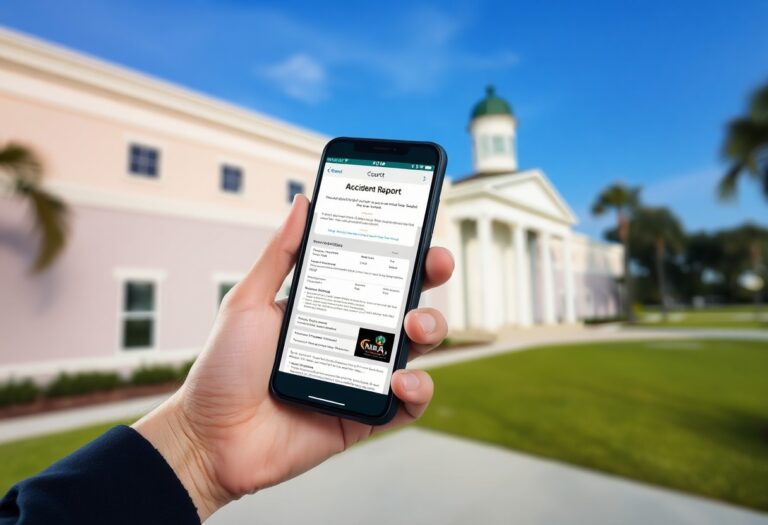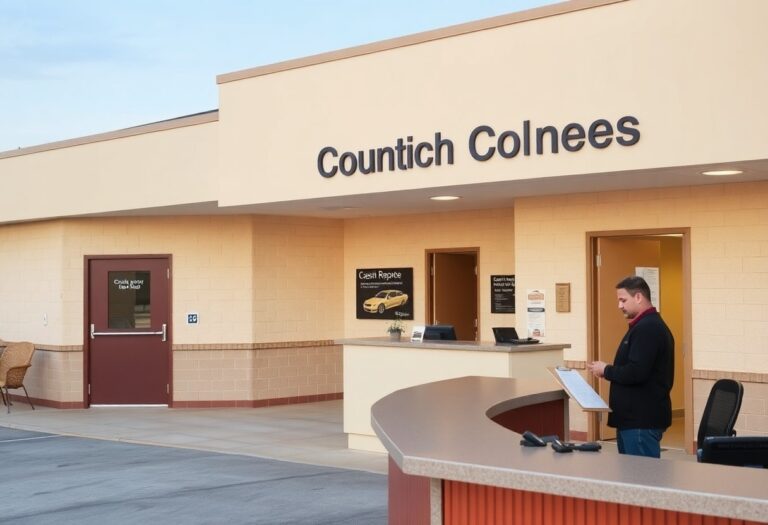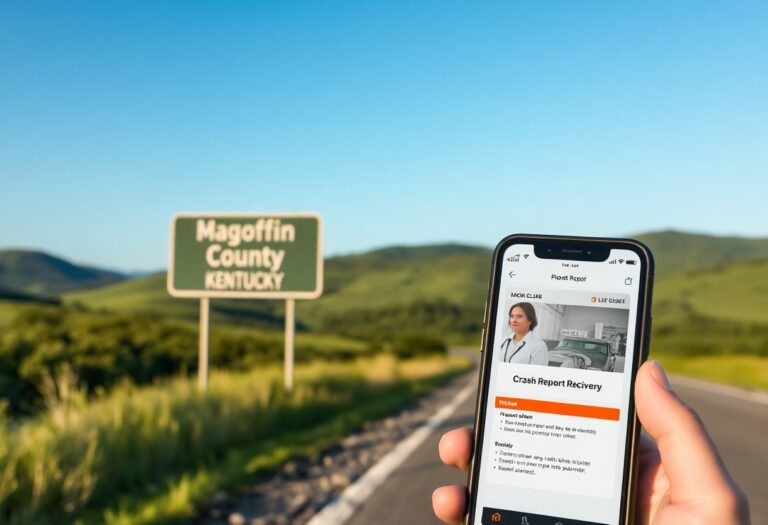You may find yourself needing to obtain a crash report after an incident in Wilson County, North Carolina. Understanding the process for accessing these reports can be daunting, but you don’t have to navigate it alone. This guide will provide you with clear, step-by-step instructions to help you access your report swiftly and safely. By following these guidelines, you can ensure a seamless experience in retrieving vital information related to the incident.
Navigating the Legal Framework for Crash Reports
The legal landscape concerning access to crash reports in Wilson County involves understanding various rights and regulations that dictate how you can obtain these documents. This section provides the imperative information needed to navigate this process smoothly and efficiently, ensuring you are well informed about your rights as a requester of public records.
Understanding Your Rights to Access
You have the right to access public records, including crash reports, thanks to the North Carolina Public Records Law. This law emphasizes transparency and allows you to request these documents without needing to provide justification. Whether you are a party involved in the crash, a legal representative, or simply a concerned citizen, your right to access this information is protected.
Key Legislation Governing Information Requests
In North Carolina, the Public Records Law, codified in Chapter 132 of the General Statutes, plays a pivotal role in regulating how citizens can request access to crash reports. This legislation ensures that the public can access records unless there are specific exemptions that warrant denial, such as ongoing investigations or sensitive personal data.
Under the North Carolina Public Records Law, various exemptions may come into play. For instance, if a crash report is part of an ongoing investigation, it may be withheld until the investigation concludes to protect the integrity of the legal process. Additionally, the law outlines specific time frames for responding to requests—typically within ten business days—ensuring your requests are handled in a timely manner. Being informed about these regulations can empower you in your pursuit of obtaining vital information following an accident. Understanding both your rights and the governing legislation is key to successfully navigating the process of accessing crash reports in Wilson County.
The Step-by-Step Process to Request Your Crash Report
| Step 1: | Gather necessary information. |
| Step 2: | Choose submission method. |
| Step 3: | Submit your request. |
| Step 4: | Receive your crash report. |
Preparing Your Request: Gathering Necessary Information
Before initiating your request for a crash report, collect all relevant details to expedite the process. Key information includes the date, time, and location of the incident, as well as the names of all parties involved and any reference numbers provided by law enforcement. This data enhances the accuracy of your request and ensures you obtain the correct report swiftly.
Submitting Your Request: Channels and Methods
Requests for crash reports in Wilson County can be submitted through various channels, including in-person visits to the law enforcement agency, phone inquiries, or online portals. Each method has specific forms or procedures, so ensure you select the one that fits your circumstances best. Consider your convenience and the urgency of acquiring the report when choosing the submission method.
Online submissions are often the most efficient, particularly if you prefer a quicker response. Many jurisdictions offer an online request form where you can input your details directly, sometimes providing immediate confirmation of your submission. If you prefer personal interaction or have specific questions, visiting the police department in person allows for real-time assistance, though it may take longer to process your request compared to digital methods. Always double-check fees that might apply and ensure all required documentation is thoroughly completed to avoid delays.
What to Expect After Submission
After submitting your request for a crash report, you can expect a structured process that ensures your needs are met effectively. Once received, the request will be reviewed, and any necessary verification will take place. In most cases, you should be notified promptly about the status of your request or any additional information needed.
The Timeline for Processing Requests
The typical timeline for processing your request can vary, but you can usually expect to receive a response within 5 to 10 business days. In more complex cases, it may take longer, so patience is often required during this period.
Potential Challenges and How to Address Them
Challenges in obtaining your crash report may arise due to incomplete submissions or issues with data retrieval. Be proactive by ensuring that you provide all necessary documentation and details in your initial request. Keeping track of your submission and following up can also help expedite the process.
In some instances, you may encounter roadblocks such as delays due to high request volumes or specific information not being available immediately. If the request takes longer than expected, reaching out directly to the relevant office can clarify the situation. Additionally, occasionally there might be a required fee to access certain reports. Knowing your rights and what is needed beforehand can smooth out any potential hiccups. Engaging with customer support and asking for guidance ensures you remain informed and empowered throughout the process.
Utilizing the Crash Report: Next Steps and Considerations
Once you have accessed your crash report, understanding it thoroughly is the first step towards effective utilization. Depending on the circumstances surrounding the incident, you may need to present this report to your insurance company, your legal counsel, or even use it in negotiations about liability. Identifying the key components will help you strategize your next moves, whether seeking compensation or ensuring your rights are protected.
Interpreting the Information in Your Report
Each section of the crash report contains vital information relevant to the incident, including details about all parties involved, vehicles, and road conditions. Pay close attention to the diagram illustrating the accident scene, as it can clarify the positions of vehicles, the point of impact, and any contributing factors. Understanding the terminology and the context around the assigned fault gives you insight into how the authorities perceived the incident.
Using the Data for Insurance and Legal Purposes
The crash report serves as a foundational document when engaging with your insurance company or legal advisor. Presenting accurate and comprehensive data helps your insurance provider assess your claim efficiently, affecting your payout and coverage options. Law firms can utilize the report to build a stronger case regarding liability or damages—imperative for any potential litigation.
Insurance companies will scrutinize details from the crash report to determine liability and validate claims. For instance, if the report contains witness statements that corroborate your account of the accident, it enhances your position significantly. Should there be discrepancies in reported data, such as vehicle speeds or contributing circumstances, these can become points of contention when negotiating settlements. Furthermore, if you pursue legal action, the accuracy of the crash report can substantiate your claims regarding damages or injuries sustained. Thus, a clear understanding of this document is vital for navigating the aftermath of a collision effectively.
Common Pitfalls in the Crash Report Access Process
Accessing your crash report may seem straightforward, but certain common pitfalls can delay your progress or complicate the situation. Issues often arise from not checking the correct agency to request reports from or failing to review required documentation ahead of time. Additionally, overlooking necessary details, such as specific report numbers or incident dates, can lead to frustrating setbacks.
Mistakes to Avoid When Requesting Your Report
When requesting your crash report, avoid incomplete or incorrect information on your application. This can lead to delays as the agency may need to reach out for clarification. Be sure to double-check the details provided, such as your contact information and the date of the incident. Another pitfall is neglecting to confirm the identity verification requirements; missing documents can prolong your request significantly.
Understanding Fees and Costs Associated with Access
Many agencies charge fees for processing crash report requests, which can vary widely based on your location and the type of request you are making. In Wilson County, North Carolina, standard report fees typically range from $5 to $15. Ensure you inquire about payment methods accepted, as some agencies may only accept cash or specific forms of electronic payment.
Understanding the fee structure is crucial for a smooth access process. For instance, you might face higher charges if you request a rush service for urgent copies. Some agencies may offer discounts for bulk requests or provide fee waivers for certain qualifying individuals, such as victims of the accident or their immediate family members. Always verify the latest costs on the agency’s website or by contacting them directly, as they can change frequently and may differ based on the specific situation surrounding your crash report request.
Conclusion
Presently, accessing your crash report in Wilson County, North Carolina, is a straightforward process when you follow the step-by-step support provided. By understanding the requirements and the methods available for obtaining your report, you can efficiently navigate the system and ensure you have the necessary documentation for your personal or legal needs. Armed with this knowledge, you are now equipped to access your crash report with confidence.













